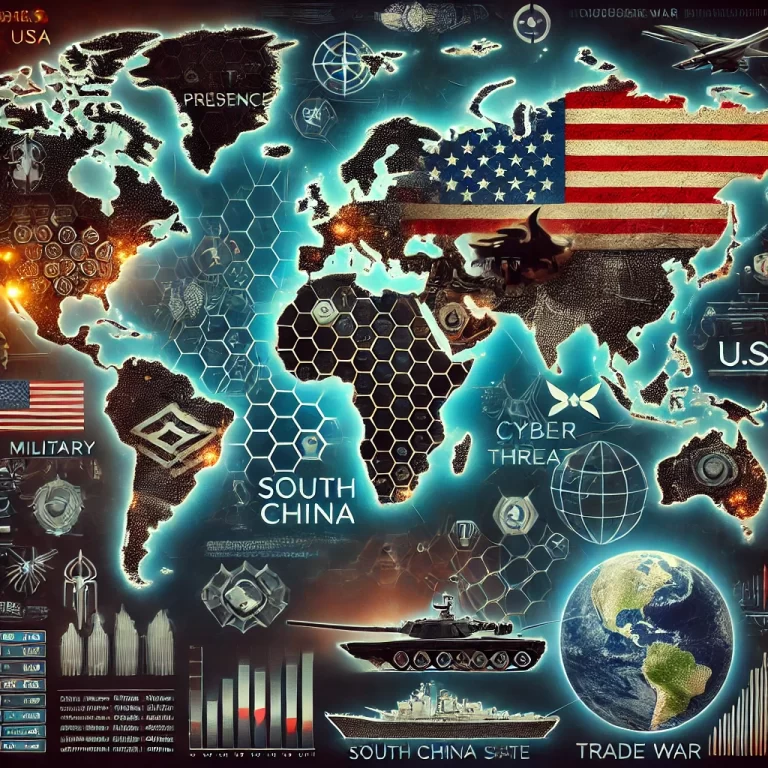
Navigating the Tangled Web: Manono Lithium Project Dispute
In the heart of the Democratic Republic of the Congo (DRC), within the Tanganyika Province, lies the bustling town and territory of Manono, a place on the brink of significant transformation. Home to about 30,000 souls, Manono is divided into two parts: the northern sector called Manono itself, and the southern part named Kitotolo.
It’s here that AVZ Minerals, a mining firm from Perth, Australia, has unearthed what’s touted as the world’s largest lithium deposit, a resource poised to redefine the global battery market. A rich vein of lithium, crucial for the batteries powering our future, has become the centre of a complex legal and financial battle. This dispute is not just about mineral rights; it’s a story of ambition, international investment, and the murky waters of mining regulations.
At the heart of this unfolding drama are several key players: AVZ Minerals, Dathcom Mining SA, Congolaise D’Exploitation Miniere SA (Cominiere), Jin Cheng Mining Company, and Suzhou CATH Energy Technologies. Each entity plays a significant role in the unfolding saga of the Manono Lithium Project, a treasure trove of potential that has sparked a fierce ownership dispute.
The Stakeholders Unveiled
AVZ Minerals:
An Australian mining titan, AVZ Minerals finds itself at the epicentre of the controversy. Spearheading the development of the Manono Lithium Project, AVZ’s vision is to tap into this vast lithium reserve. However, their journey is fraught with legal hurdles and ownership disputes, casting a shadow over their ambitious plans.
Dathcom Mining SA:
At the heart of this unfolding drama are several key players: AVZ Minerals, Dathcom Mining SA, Congolaise D’Exploitation Miniere SA (Cominiere), Jin Cheng Mining Company, and Suzhou CATH Energy Technologies.
Dathcom Mining SA is the holder of the keys to the kingdom—the Manono Lithium Project itself. With AVZ Minerals holding a 75% stake and an option for more, Dathcom is the battlefield on which the struggle for control and profit unfolds.
Congolaise D’Exploitation Miniere SA (Cominiere):
A state-owned entity with a 25% stake in Dathcom, Cominiere’s role is pivotal. Their decision to sell a portion of their stake to Jin Cheng Mining Company has ignited tensions, challenging the existing dynamics and agreements within the project.
Jin Cheng Mining Company:
A new challenger enters the arena, aiming to secure a 15% stake from Cominiere. Jin Cheng’s intentions have clashed with AVZ’s, leading to a standoff that threatens to unravel the fabric of the project’s ownership and future prospects.
Suzhou CATH Energy Technologies:
Stepping in with a proposal to buy a 24% interest in Dathcom for US$240 million, Suzhou CATH Energy Technologies is a testament to the global interest in the Manono Project’s potential. This deal, however, adds another layer of complexity to the already convoluted situation.
The Heart of the Matter
The essence of the dispute lies in conflicting ownership claims and the interpretation of contracts. The proposed sale to Suzhou CATH Energy Technologies, alongside Cominiere’s intent to sell to Jin Cheng Mining Company, puts AVZ’s stakes at risk. With legal challenges arising from various quarters, including questions over the validity of share certificates and potential breaches of pre-emptive rights, the future of the Manono Lithium Project hangs in the balance.
The Broader Implications
This tussle over ownership and legal rights is more than a corporate skirmish. It underscores the global race for lithium, a critical component in the green energy revolution. The outcome of this dispute could have far-reaching implications for the DRC, the involved companies, and the global market’s access to lithium.
As the saga unfolds, the international community watches closely. The Manono Lithium Project is not just a story of minerals and money; it’s a narrative about the complexities of modern-day mining, international law, and the quest for sustainable energy sources. The resolution of this dispute will likely be a landmark case in the annals of mining history, setting precedents for how resources, especially those as coveted as lithium, are managed, developed, and shared in our increasingly interconnected world.
The Beneficiaries of Manono’s Potential
In 2017, AVZ embarked on unlocking Manono’s riches, launching a massive drilling campaign. Their efforts revealed 400 million tonnes of lithium ore, promising mining for over 50 years, with a monthly export potential of 80,000 tonnes, crucial for batteries and cleaner energy.
However, prosperity goes beyond mining. AVZ aims to revitalize the Piana Mwanga hydroelectric power station, supplying 64 megawatts to illuminate Manono. As lithium prepares for transport to Dar es Salaam in Tanzania, one must ponder who benefits.
Will it be the local communities in Manono and Kitotolo, awaiting growth? Will it benefit the Congolese nation? Or will global giants profit, needing lithium for electronic devices and renewable energy?
As Manono’s story unfolds, hope grows. The world yearns for the true beneficiaries to be the rightful owners of this wealth – the people of Manono, the Congolese nation, and future generations who deserve the rewards of their land’s resources.
Aric Jabari is a Sixteenth Council Fellow



